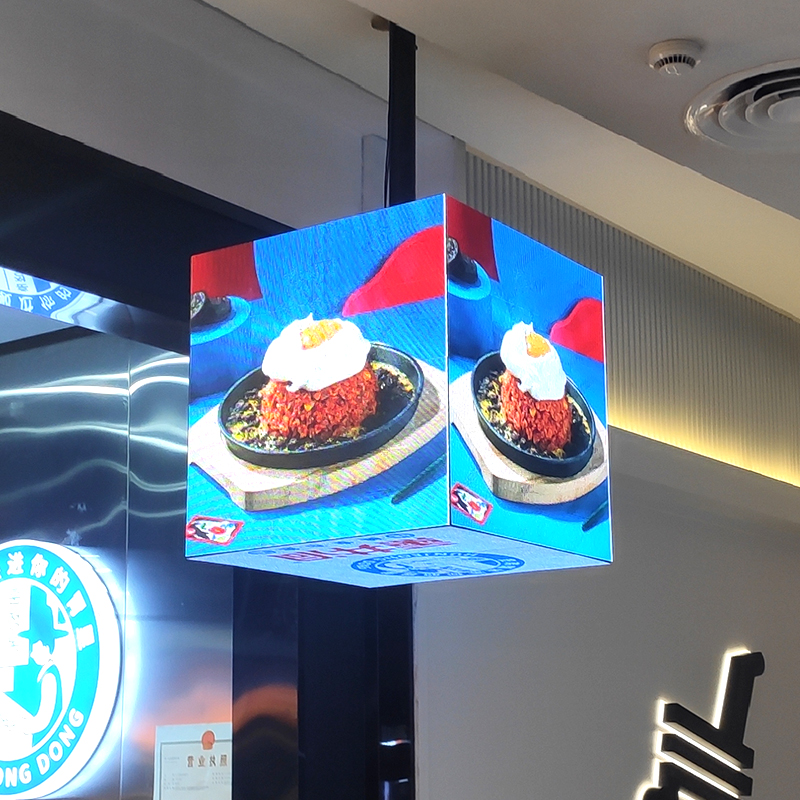No products in the cart.
Industry news
How to choose the appropriate LED display screen.
The resolution of a regular LED display screen is generally up to 768 lines × 1024 columns. Special LED display screens can exceed this limit, and the commonly used method is to combine two screens; Another option is to design circuits using ultra fast chips, but the cost is relatively high.
The following are the design reference dimensions for indoor LED display screens:
φ The 3.0mm point spacing is 4.00 mm, and the maximum screen size is approximately 2.0 meters (high) × 3 meters
φ The dot spacing of 3.75mm is 4.75 mm, and the maximum size of the screen is approximately 2.5 meters (high) × 4 meters
φ The point spacing of 5.0mm is 7.62mm, and the maximum size of the screen is approximately 3.7 meters (high) × 6 meters
When designing the geometric dimensions of indoor LED display screens, the size of the display unit template should be taken as the basis. A unit template usually has a resolution of 32 lines × 80 columns, with a total of 2048 pixels, have the following geometric dimensions:
φ The size of the 3.75mm unit template is 153 mm (high) × 382 mm (width)
φ The size of the 5 mm unit template is 244 mm (high) × 610 mm (width)
The size of the outer frame of the indoor LED display screen can be determined according to requirements, and should generally be proportional to the size of the screen body. The size of the outer border is usually 4cm-10cm (on each side).
For outdoor screens, the first step is to determine the pixel size. The selection of pixel size should not only consider the need for display content and site space factors mentioned earlier, but also consider safety
Installation position and sight distance. If the installation position is farther from the main visual distance, the pixel size should be larger, because the larger the pixel size, the more light emitting tubes inside the pixel, and the higher the brightness
The farther the effective sight distance is, the further it becomes. However, the larger the pixel size, the lower the pixel resolution per unit area, and the less displayed content.
Power consumption and power requirements
The power consumption of the display screen is divided into average power consumption and maximum power consumption. The average power consumption, also known as working power consumption, is the actual power consumption in daily life. The maximum power consumption is at extremes such as startup or full light
The maximum power consumption in a situation is a factor that must be considered for AC power supply (wire diameter, switch, etc.).
φ 5 mm display screen power consumption:
Average power consumption: 200W/square meter; Maximum power consumption: 450W/square meter
φ 3.75mm display screen power consumption= φ 5 mm display screen power consumption × 2.5x
The display screen is a large precision electronic device. In order to ensure safe use and reliable operation, the AC220V power input terminal or the AC220V power input terminal of the connected microcomputer must be grounded.
Note: The AC220V power input grounding terminal of the microcomputer has been connected to the microcomputer casing.
Special considerations for outdoor LED display screens
The main issues with outdoor screens are as follows:
The display screen is installed outdoors, often exposed to sunlight and rain, and the dust cover is blown by wind, resulting in a harsh working environment. Electronic devices that are wet or severely damp can cause short circuits or even fires, leading to malfunctions or even fires, resulting in losses.
The display screen may be subjected to strong electrical and magnetic attacks caused by lightning.
The ambient temperature varies greatly. When the display screen is working, it must generate a certain amount of heat. If the ambient temperature is too high and the heat dissipation is poor, the integrated circuit may not work properly, or even be burned out, thereby preventing the display system from working properly.
